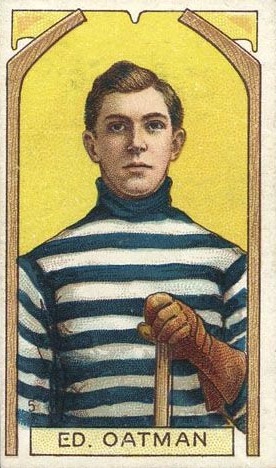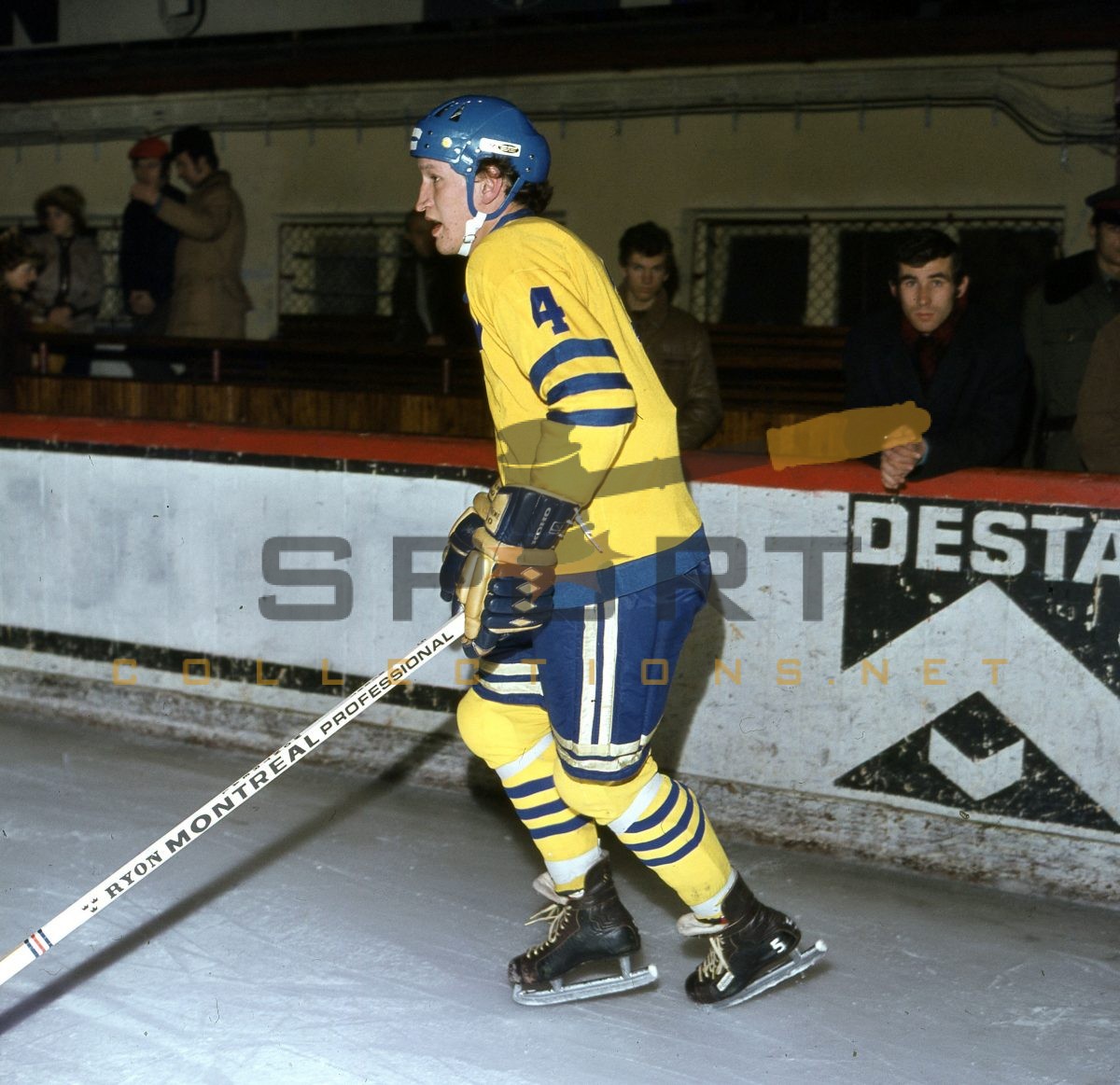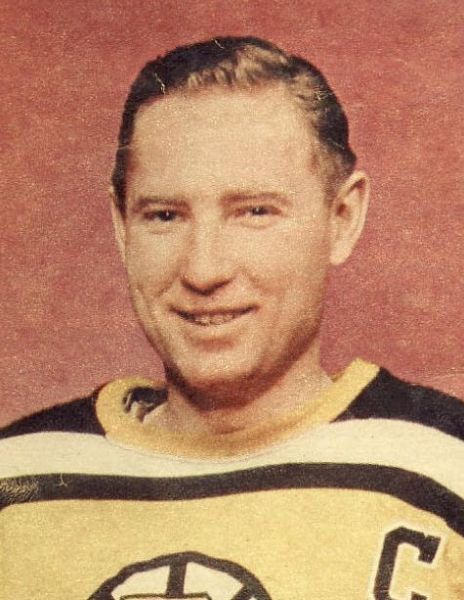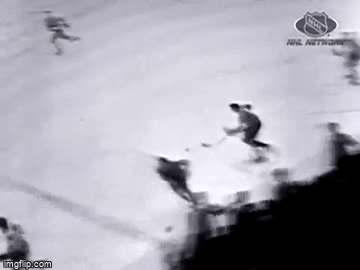TheDevilMadeMe
Registered User
Art Ross, D
This is a consolidation of work done by jarek, overpass, Leafs Forever, HT18 and me.
Height: 5'11
Weight: 190 lbs.
Shoots: Left
Stanley Cup Winner (1907, 1908)

Awards and Achievements
MHL Pro 1st All Star Team (1907)
ECAHA 1st All-Star Team (1908)
Points Amongst Defensemen
MHL Pro (a few notable names): T-2nd (with Si Griffis) (1907)
ECHA: T-1st (1908)
NHA: 1st (1912), 2nd (1913), 2nd (1916), T-4th(1910)*, 5th (1911)
*A newspaper article found states Ross was actually 3rd in this year, and stood alone at 3rd.
seventieslord VsXD scores: 131, 94, 87, 83, 72, 45, 43, avg. 79.3
Rushing and stickhandling:
Hockey Notes:
Legends of Hockey - One on One With Art Ross
Fearless fighter
Hockey Blog in Canada
As still a player, Ross invented, "kitty-bar-the-door," probably the earliest version of a trapping defense in hockey
"The greatest hockey player" "the finest defenseman in the east"
It was said by Jim Coleman that if you wanted to win the Cup, you went out and got Art Ross:
Contemporary comparison of Ross to Hod Stuart and Lester Patrick:
This particular passage suggests Ross was a selfish player compared to Stuart. There may have been some truth to that, but the accounts of him using his teammates exceed any mentions of selfishness.
While Ross was better known for his offense, his defense also appears to have usually been strong:
More comments on offensive game:
Comments on his physicality and toughness:
A few negative passages
He did seem to be selfish at times:
He had some bad games too:
Performance in the 1915 Stanley Cup Final
Ross seemed to get a little too dirty (penalty trouble) when things didn't go his way:
This is a consolidation of work done by jarek, overpass, Leafs Forever, HT18 and me.
Height: 5'11
Weight: 190 lbs.
Shoots: Left
Stanley Cup Winner (1907, 1908)
Awards and Achievements
MHL Pro 1st All Star Team (1907)
ECAHA 1st All-Star Team (1908)
Points Amongst Defensemen
MHL Pro (a few notable names): T-2nd (with Si Griffis) (1907)
ECHA: T-1st (1908)
NHA: 1st (1912), 2nd (1913), 2nd (1916), T-4th(1910)*, 5th (1911)
*A newspaper article found states Ross was actually 3rd in this year, and stood alone at 3rd.
seventieslord VsXD scores: 131, 94, 87, 83, 72, 45, 43, avg. 79.3
Legends of Hockey said:In addition to an exemplary career as a defenseman, He contributed to the development of hockey through his off-ice endeavors. He recorded 85 goals in 167 regular-season games and provided stability and savvy in the defensive zone.
In 1905 he made his first appearance for a major hockey organization by scoring 10 goals in eight games for the Westmount franchise in the Canadian Amateur Hockey League. He rapidly earned the distinction of being one of the top rushing defensemen in the game.
The following year he skated for Brandon of the Manitoba Hockey League. His play attracted the attention of the Kenora Thistles, who worked out a loan agreement with Brandon in time for their Stanley Cup challenge against the Montreal Wanderers in January 1907. During the two-game set, he received numerous ovations from the Montreal crowd. Although he didn't score, he made a number of quality offensive rushes that contributed to Kenora's Stanley Cup win. A year later, hiss services were purchased by the Wanderers in a move that strengthened an already formidable outfit. He was a key reason the Red Bands finished at the top of the Eastern Canada Amateur Hockey Association standings and then beat back the Stanley Cup challenges from Winnipeg, Toronto and Edmonton.
Rushing and stickhandling:
Hockey Notes:
In late 1910, he rejoined the Wanderers, putting up four seasons there before joining the Ottawa Senators. "Ross played like an eel," XXXXX once said. "He was one of the greatest stickhandlers I ever saw. He could spin on a dime, and he was so tricky there was no blocking him."
Legends of Hockey - One on One With Art Ross
Ross was pioneering the defence position, and many compare him to Bobby Orr of more recent hockey. He was a rushing defenceman during an era when players in that position either shot the puck down the ice or passed to a forward. Instead, Ross carried the puck up the ice into the offensive zone.
Fearless fighter
Hockey Blog in Canada
He was viewed as a fearless player who never backed down from a fight in his life. Ross' highest PIM total was in 1913-14 with the Wanderers in the NHA. In 18 games, he spent 74 minutes in the penalty box! From 1912-17, Ross would never spend less than 55 minutes in the penalty box in one season despite only averaging 18 games per season in the NHA.
February 17, 1915 saw Ross square off in a fight with Toronto Blueshirts' player r Roy "Minnie" McGiffin which ended up with both players being arrested for assault. The fine of $1 each was paid in total by McGiffin who lost a coin toss to Ross while in jail. Referee Cooper Smeaton was almost arrested as well for his inability to control the fracas, but he escaped without penalty.
As still a player, Ross invented, "kitty-bar-the-door," probably the earliest version of a trapping defense in hockey
Michael McKinley said:It was while Ottawa was travelling to Montreal for the 1915 NHA championship that Ross invented "kitty-bar-the-door" hockey, thinking that the fast, powerful Wanderers could be stopped by stringing three defensemen across the width of the ice, 30 feet in front of the goalie, defying any Montreal forward to skate through. The confident Wanderers, playing on home ice, even had a fleet of taxis waiting outside the rink to take them to the railway station so they could head west to meet Vancouver for the Stanley Cup. Their pride and Art Ross's defensive shell ensured that the taxis came in handy for the Ottawa Senators instead, who won the round on goals and caught the train to the coast.
"The greatest hockey player" "the finest defenseman in the east"
The Spokesman Review Nov 25 1917 said:When Art Ross quits hockey the winter game will lose "the greatest player it ever produced." That batter title has been tossed about a bit, confered on first one and then another, but when they've all been rattled through the sifter Ross stands out as the brainiest, most consistent player over a long period of years that the game has ever known
Six feet in height, perfectly proportioned, always in the pink of condition, Ross in his hey-day added these assets terrific speed and a stick-wizardry that was little short of marvelous. In later days he lost his high flight of speed, but the ability to puzzle opponents with sheer trick skill has not deserted the big Scotsman. Although he doesn't flash and circle about the ice with the meteoric dash of yore, opposing defense still find it a difficult task to get the puck off Ross's elusive stick. Add to this a hockey brain of far more than average keeness which stored up the experience of many years, and Ross is still today a formidable addition to any game.
The ice game has never had a smarter player than Ross. How, when playing with Ottawa, he euchered the Wanders out of the championship of 1914-15 is still fresh in the minds of contemporary fans....
The dope was that Ottawa would try to make their defensive stand through a strong offense, and that was the style the Wanderers primed themselves for. Instead, when the game started Ross spread out three players in front of the Ottawa net. …
It was a neat a bit of ice generalship as was ever seen, and was a peculiarly gratifying victory to Ross.
Detroit Free Press Dec 23 1917 said:Headline: Art Ross, Known as Best hockey Player, to quit
The Montreal Gazette Jan 11 1908 said:Art Ross, on defense, is the finest player in his position in the east.
Feb 5 1917 The Calgary Herald said:ART ROSS Who's work at cover point for the Wanderers is subject to much comment in hockey circles. He has been in the professional ranks for many years and is still considered to be the most formidable defence man in the game.
The Pittsburgh Press March 10 1908 said:It is a question if a better defense man than Art Ross was ever seen in the business. He was a terror to all other teams and it was a cry all over the circuit to watch Ross and beat the Wanderers. He was the particular player that the Ottawa watched but with all the precaution that the team took. Ross got away and it was his pair of goals that won the game that gave his team the silverware.
It was said by Jim Coleman that if you wanted to win the Cup, you went out and got Art Ross:
Jim Coleman – Legends of Hockey TV Series said:If you wanted to gather a team to win the Stanley Cup it was a good idea to hire Art Ross. That's the reason he played on so many different teams because when anybody was building for a Cup bid they'd get Ross to anchor their defense
Adding Art Ross was the reason Kenora was able to beat the Ottawa Silver Seven after losing. After Kenora, Ross moved on. The Wanderers hired Ross because he was the main reason they'd been beaten, so it made sense to put the lad in the red Wanderers jersey. The next season they won the Cup.
Contemporary comparison of Ross to Hod Stuart and Lester Patrick:
Pittsburgh Press March 21 1908 said:A discussion was started yesterday to the relative merits of Ross and the late Hod Stuart as hockey players. Nearly all who attended the Gardens in recent years have seen the great cover point, who met such an untimely death, play and regard his as the greatest ever. But there are many who declared Ross is superior, and not a few will watch his work tonight to make their own deductions.
Morning Leader: 1-18-1908 said:(quoting an Ottawa Free Press writer) Reports of Arthur Ross being the sensation of the year have not been exaggerated. He is another Hod (sic) Stuart and then some. Speed, magnificent stick handling, ability to dodge everything and anybody, backed up by a fine shooting arm, places (sic) the celebrated athlete on a pinnacle few may hope ever to attain. Ross has everything. The cool head is ever prevalent. He can work by himself or with the rest of the team, has no disposition to be selfish and is gifted with a powerful physique to round off his other accomplishments.
Montreal Gazette Dec 26 1908 said:Lester Patrick is stated to be as in good condition as he was when he played for the Wanderers two years ago, but this is doubtful. It is considered by the challengers that he has finer points in his stickhandling than Ross, but Ross is a stronger man at withstanding attacks and he has almost as spectacular and certainly a more aggressive manner of going up the ice. In Montreal Ross is regarded as the greatest defense player in hockey.
This particular passage suggests Ross was a selfish player compared to Stuart. There may have been some truth to that, but the accounts of him using his teammates exceed any mentions of selfishness.
Daily Phoenix: 1-30-1909 said:Far Short of Hod Stewart
Ross fills the place on the team left by the late "Hod" Stewart, but he hasn't the finish that that great player had. His play is too much on the selfish order; he wants to score, and that is where Stewart had it on him. Stewart was satisfied to carry the puck into the opposing side's territory and pass to someone else to do the shooting. Thus he not only made a name for himself but one for the man who did the scoring. As a defence player Ross is not to be criticized, but when he sallies forth to do the scoring, he makes a mistake.
While Ross was better known for his offense, his defense also appears to have usually been strong:
Ottawa Citizen Feb 10 1910 said:Art Ross did the bulk of the work for Halleybury. He alone was successful in warding off the attacks of the Ottawa players...Ross was in game at all time, and had it not been for his sterling work Ottawa would run up a much bigger score.
Montreal Gazette Jan 14 1908 said:Hooper (coverpoint), who had been handicapped by a late start this season, showed more speed last night and made one or two last night. He is still weak in blocking, however. For a time Ross and Hooper changed positions last night, but Ross is too strong a man in keeping a forward line out to justify a shift.â€
Montreal Gazette Jan 9 1915 said:Art Ross made his first appearance in an Ottawa uniform and was a great factor in their victory He played a brilliant game on the defence- breaking up Toronto rushes on many occasions when scores seemed certain. He bowled the champions over with his body and there was an excuse for his rough work as he became the target for the Toronto tripping and slashing...Ross was very unselfish and figured in several clever two man rushes with Gerard.
The Morning Leader March 21 1913 PCHA/NHA Challenge Series Game said:Ross was one of the best men on the ice, his checking and rushing being sensational.
Montreal Daily Mail March 4 1914 said:Ross and Cleghorn were never better and their clever defence play had much to do with the result.
Jan 10 1908 Montreal Gazette said:As it was, Vics lacked a scorers, and against the good defense that Ross and Howard presented their attacks as a rule were broken up with ease.
With Ernie Johnson and Art Ross forming a great defense in front of the Wanderers' goal, the Ottawa attacks were rudely smashed...
Art Ross and Ernie Johnson, the two highly paid Montreal stars were very much alive. They tore through the Ottawa team repeatedly with irresistible aggressiveness.
Monreal Gazette Jan 19 1908 said:There was one bright feature to the game, and that was the play of Art Ross, the Wanderer point. Ross has improved every time out this year, and last evening he gave one of the finest exhibitions of defence playing yet seen at the Arena. In breaking up attacks he was cool and fearless. He waited until the man was in, and seldom missed stealing the disc of intercepting the pass. From the start he kept rushing back into Victoria quarters, and his great speed and splendid stick handling made him too difficult a proposition for the challengers to solve. The crowd was not slow to appreciate the fine work he was doing, and every rush he made was greeted with increasing applause from all sides. Towards the end there was a tremendous call to the big cover-point to "come on yourself" every time he touched the disc.â€
Montreal Gazette Jan 14 1908 said:Art Ross, who has starred with spectacular rushes in all his games this year, only once or twice got past centre ice in the first half. Patrick, who starred in the Quebec game with similar plays, was in much the same position as Ross, although more successful for a time. The forwards kept checking back relentlessly and it was almost impossible for one player to advance alone for any distance. In the second half, when there were weak spots on both teams, the individual's chances became better and Ross and Smaill on the one side and Patrick and Gilmour on the other pulled off some long runs.
Ross and (Frank) Patrick, playing much the same style of game, shone in dashes down the ice, but Ross had the shade better of it, as a defence player. Both Ross and Patrick figured for a goal on the score sheet, the result of end-to-end runs.
Montreal Gazette Jan 14 1908 said:The defense was its strongest point, and had it not been for the work of Riley Hern and Art Ross, Ottawa would have scored twenty more goals...Ross tried innumerable rushes, his speed and stickhandling proving him to be a star of the first water. Ross, however, found Taylor and Pulford to be an impregenable combination
Ottawa Citizen said:Ross was easily the individual star of the match and stood head and shoulders above all others, his brilliant work evoking round after round of applause. His speed was phenomenal, his stick handling superb, and his checking very effective.
Feb 23 1911 Montreal Gazette said:When they did get in on the poles either Hern or Ross was there to save the day, and both the latter put up a good game.
Mar 22 1911 Boston Daily Globe said:Great defensive work may be expected of Ross at point, for he knows the game inside and out...
More comments on offensive game:
Montreal Gazette Aug 6 1964 said:The Thistles grabbed (Ross) as an up and coming defence star. He could stickhandle and score like a forward, and after an outstanding series against the Montreal Wanderers he soon was back in his home town playing the game.
He later moved to the Ottawa Senators and during his stay there helped evolve the kitty-bar-the-door defence.
Jan 11 1908 Montreal Gazette said:Taylor, according to the Ottawa men who saw Thursday night's game, is faster than Art Ross, but not the same finished stick handler.
Ottawa Citizen Jan 10 1908 said:Sensational plays on the part of the champions were numerous indeed and frequently the crowd arose and cheered enthusiastically the long rushes of Art Ross...Ross was easily the individual star of the match and stood head and shoulder over all others, his brilliant work evoking round after round of applause. His speed was phenomenal, his stick handling superb, and his checking very effective.
The Calgary Daily Herald March 22 1913 said:Ross was the most effective player of the Easterners, although he played on a strange pair of skates. He scored three goals as the result of end to end rushes right through the opposing team.
The Westmount News Jan 5 1912 said:Art Ross was back in his old form and time and time again carried the puck from end to end passing it out to his forwards when nearing the opposite goal.
Montreal Gazette Feb 17 1908 said:Hern, Ross, and Blachford were the stars...Ross's play was greatly admired by the crowd. Quebec could not solve his serpentine runs.
New York Times Mar 9 1913 said:...all received a warm welcome last night. Especially was this true of the Cleghorn brothers, who once played with one of the local teams, and Art Ross, who for years has been recognized as one of the greatest of hockey players. Although under a tremendous handicap last night, Ross gave an exhibition that scintillated with brilliancy all the way, and his spectacular trips up and down the ice drew forth round after round of cheers.
Several days ago, while playing at home, Ross sustained a serious bruise on his back and right side. He went into this game so heavily bandaged that the protection stood out like huge pads under his heavy sweater. That his playing was affected by this injury could be plainly seen several times, when he was forced to rest after a brilliant display of his cleverness, but the injury was not enough to dim his lustre. His journeys up and down the rink were easily the features of the game that brimmed over with features.
When Ross set out to carry the puck through the opposing team he left the Ottawa players behind him as if they were standing still, cleverly eluding one and then another without any apparent exertion. A massed defense at the goal usually stopped his tries for a goal, but he managed to shoot two past the noted Le Sueur, both of them being at the finish of spectacular juggling.
Next to Ross the star playing for the Wanderers was done by Odie Cleghorn and Hyland...
New York Times March 11 1913 said:The game was a series of splendid plays by both teams, the Wanderers easily excelling in spectacular feats. Sprague Cleghorn excelled in dazzling serpentine runs down the ice, for the Ottawa defense watched Art Ross closely and had him boxed when he approached the mouth of the net. In the open rink, however, Ross easily dodged and zigzagged his way through the Ottawa skaters.
Ross, out-generalling the opposing skaters who crowded about him, toyed and poked the rubber through the Ottawa players' skates, and always came out of the scrimmage with the puck and a broad smile.
Comments on his physicality and toughness:
Saskatoon Phoenix March 16 1914 said:One exciting encounter took place between Art Ross, of the Wanderers, and Mummery of the Quebecers. Both are 200 pounders, and they came together with a resounding crash. Both tried eachother's skill at tripping, and they were sent from the game for five minutes. Later on they repeated the rough work and were banished again.
The Saskatoon Phoenix Jan 18 1915 said:Art Ross played against his old team mates and was one of Ottawa's best men. Prodgers prove the individual stud in the early stages but Ross met him with a crash and took all the steam out of the London Man.
The Toronto Sunday World Marc 24 1914 said:The climax arrived when Art Ross and Mummery got into a fight and rolled around the ice, locked in eachother's arms. They were quickly seperated and both sent to the timers to cool off.
Montreal Daily Mail March 4 1914 said:Ross was laid out by being struck with a puck over the heart, but the veteran continued pluckily.
Pittsburgh Press Mar 19 1908 said:Ross and Smaill, the two sturdy defence men, fairly took away the breath of those who were allowed into the preliminary canter. The way these giants sped over the mammoth surface was phenomenal... (sturdy could also be referencing defensive play)
Montreal Gazette Jan 1 1909 said:The Wanderer defence was its strong point, Hern being the most effective. Ross was as good at point, although not up to last seasons's form, and Smail at cover was another source of strength.
Art Ross, who has earned a very enviable reputation in the past as a clean, honest player, was a vicious offender in the heavy work, and frequently sent to the side.
Feb 27 1911 Montreal Gazette said:A fist-fight marked the closing minutes of the game and some of the spectators rushed on the ice to get a better view of the combat. Ross of the Wanderers and Oatman of Quebec were the principals in the clash.
With Oatman in the lead, the unruly pair skated towards the penalty timer's box and, as the Quebec player started to mount the rail Ross, angered at the crack he received on the head, pulled off his glove and struck Oatman a hard blow over the eye with his bared first. This was the signal for about fifty excitable spectators to jump on the ice but they were soon shooed off by the Westmount police and Arena officials. After Ross had punched him, Oatman was eager to continue the fray, but peacemakers kept the belligerents separated.
The fight occured with but two minutes of play remaining...when the game finished policemen were placed to guard the dressing rooms.
It was not a good game from the hockey point of view...that the Wanderers are fallen idols was plain from the attitude of the crowd. Most of the spectators seemed to support Quebec.
Montreal Gazette Jan 9 1915 said:...Ross charged into Cameron, knocking him unconscious...McGiffin finally began to mix things up with Ross and tripped the ex-Wanderer player. Ross waited his opportunity and then sent McGiffin head over heels into the boards with a body. It dazed the Toronto man and took much of his effectiveness away.
Feb 10 1910 Ottawa Citizen said:Play was rough towards the close. Art Ross and Percy Leseur having several tiffs. Ross persisted in bothering Leseuer and Lake
A few negative passages
He did seem to be selfish at times:
Montreal Gazette Feb 9 1909 said:Ross, it is claimed, has not been playing his game of last winter, when he was acclaimed as the greatest point in hockey, and his showing in the Saturday night match was not considered satisfactory. It is further said that he might have won Saturday's game for Wanderers had he displayed better judgment and passed the disc to Vair when Lesueur ran out to block him in the thrilling play of the last four minutes of the big match. Ross tried to score the goal off his own stick when he had only Lesueur to elude. Weakness in passing, it is claimed, has spoiled his efficiency this winter and Wanderers have decided on a change.
He had some bad games too:
Toronto World Feb 17 1913 said:Ross, Hyland, and Roberts look just about due for the ash heap, while Russell and Millar were sent there some time ago. Ross looked like a sick duck in his dying efforts to break into the limelight, and only once did he break away from the watchful "Minnie" who was working hard to get a chance to put him away.
Performance in the 1915 Stanley Cup Final
Ross seemed to get a little too dirty (penalty trouble) when things didn't go his way:
The (Vancouver) Sun Mar 23 1915 said:The first goal scored by the visitors came after Lehman had stopped a wicked shot from Art Ross. Darragh caught the rebound and slipped the runner into the net without giving Lehman a chance.
In front of (Benedict) Merril and Ross gave good support, but stellar stick-handling on the part of Vancouver forwards repeatedly beat them. Ross particularly seemed to suffer from the hard-going of the match and if anything marred his work by a little too free use of the stick.
The (Vancouver) Sun Mar 25 1915 said:Ross initiated many rushes, but was too much inclined to rough it. Ross went to the penalty bench a couple of times but at that got away with a lot of stuff that escaped the eyes of the officials.
The (Vancouver) Sun Mar 27 1915 said:Gerard was the most effective man on the Ottawa line...Merrill and Ross found the Vancouver forwards too speedy for them. Ross initiated many fine rushes down the ice.


















/https://www.thespec.com/content/dam/thespec/opinion/columnists/2017/12/14/i-should-have-wendel-clark-up-for-the-weekend/B823694657Z.1_20171214234221_000_GIQ20SNE7.2_Gallery.jpg)
